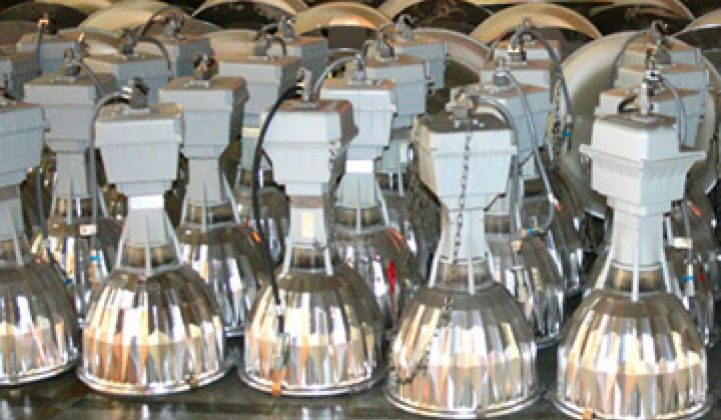General Motors‘ Spring Hill Complex in Tennessee is tightening its belt to save some cash.
But the only layoffs at the complex’s general assembly and engine plants are on the plants’ outdated lighting systems and bulbs. By upgrading to a new, high-efficiency lighting system by Light Corporation, GM is expected to save over $800,000 a year on electricity.
The Spring Hill Project, as it’s known, saw more than 4,000 outdated fixtures replaced with Light Corporation’s Semaphore fluorescent light fixtures controlled by Kanepi Innovations’ wireless lighting controls. The costs associated with this upgrade are expected to be recouped -- and produce an initial return on investment -- in just over one year, and will result in over $12 million in cost savings over a 15-year period. Translated into energy, that’s around 8.5 million kilowatt-hours of electricity per year, the equivalent of taking 750 homes off the grid.
The complex’s new wireless lighting controls give managers the ability to schedule, manage, and monitor the use of electrical devices within the facility to make sure the power is on only when it’s needed. Additionally, the lighting is optimized to specific tasks, areas, and schedules via this management tech. The wireless controls are a key part of the overall efficiency upgrade, as they are estimated to save 50 percent more energy than the high-efficiency lighting retrofit would have on its own.
Other conservation efforts at Spring Hill include hourly energy-use monitoring, plant controls that minimize non-production energy use, a waste reduction program and a designated wildlife habitat area certified by the Wildlife Habitat Council. Spring Hill’s efforts were recognized earlier this year by the Tennessee Pollution Prevention Partnership, which recertified the site as a “Performer.”
The complex’s high-efficiency lighting upgrade helped General Motors earn the 2012 Energy Star Partner of the Year Award earlier this year by the U.S. Environmental Protection Agency.
***
Editor's note: This article is reposted in its original form from EarthTechling. Author credit goes to Susan DeFreitas.



